A massive book, solely on CDC-feathers, -flies and -tying techniques by Swiss CDC master Marc Petitjean.
Updated or edited 10 months ago
In biology there's a term called a monograph. A monograph is a single book written by one author dealing with one taxon. A taxon is a group of taxonomically related animals, and monographs often deal with quite narrow groups.
Monographs are often defining and standard-setting works, written by people with a profound knowledge of their field and the books will often cover basically all aspects of the subject.
Another definition of monograph is simply "a detailed written study of a single specialized subject or an aspect of it."
This book is a monograph.
It's not about an animal taxon, but still. It's certainly a defining, in-depth work written by one man on a single specialized subject.
In this case the man is Swizz fly tyer Marc Petitjean and the subject is CDC – Cul de Canard – or as some say in slightly less flattering terms: duck's arse feathers.
Dutch Leon Links, who has written the intro to this book, authored a book on the same subject in 2003, and he subtitled his book "The Fisherman's Miracle Feather", indicating the mystique – some would say hype – surrounding this type of feather.
Petitjean accounts for the physical nature of the feather, its history in fly tying and then embarks on a journey through his literally hundreds of patterns using CDC.
This book is a monograph.
It's quite saying for the expanse of Petitjean's fly catalog – reflected in the size of the book – that his fly patterns have numbers and not names. So no "Olive CDC Stackwing" or "Tungsten Baetis CDC Nymph" or even "Petitjean's CDC Mayfly", but simply "MP14" and "MP25" and even "MP133S" and "MP133D". Considering the trouble and lack of fantasy a lot of tyers have when naming their patterns, this is an easy, but still pretty radical way out – and this absolutely isn't meant in a negative way.
OK, back to the book.
As I have already indicated the scope of the book is quite impressing. Its size indicates that something serious is going on. The format is large – approximately Letter or A4 – and the page count is 500, making it quite a hefty volume and quite impossible to use as bed time reading (I have tried!).
Large books generally require more attention to details and the visual qualities. Both the page size and the number of pages makes the journey through the book demanding, and you need to use a few "tricks" to keep the reader's attention.
Now, I know this book isn't one you are expected to read cover-to-cover. This type of book is usually digested in bites, and patterns in particular usually work quite well alone, simply because they are separate entities, like recipes in a cook book. Still, this book makes good use of some visual means to make it easy to read and navigate through.
The pages have color codes, indicating the basic subject of the content. Blue for flies, curry for tools, tan for techniques and so on. The pattern pages are uniformly laid out, and clearly illustrated with step-by-step photos and pictures of some central materials and tools.
And speaking of pictures... they do need a special mention. First of all, there's a lot of them. Like thousands. Literally. 3,000 or so. The quality is impeccable, shot by British expat Barry Ord Clarke, now Norway based, well known for his fly fishing and fly tying photographs and videos.
For this book Clarke has shot series after series of step-by-step images as well as some really excellent tool shots – not to mention some beautiful and large "fillers" of streams, fish, landscapes... nature.
Petitjean, being the manufacturer of quite a few specialized fly tying tools, doesn't neglect the opportunity to emphasize their use in the various tying steps. Even though they do get shown a lot, the book is not like a wall to wall commercial for the tools. Of course these tools are very handy, but you can do without, and you can tie all the flies in the book without owning a single Petitjean product.
The book costs 64.50 Euros or about 75 US$ to which you have to add postage since it's only available online. Postage is 12 Euros or about 14 US$. And as it's mentioned on the book web site, the package may be subject to local tax as well as a customs clearing fee.
I have said it before and can only say it again: buying books is an easy way to spend money, and large, luxurious books like this one just makes it easier. This isn't a cheap book, but for people wanting to master CDC it's a definite must-have.
...buying books is an easy way to spend money...
- Log in to post comments


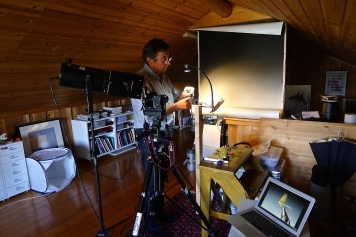
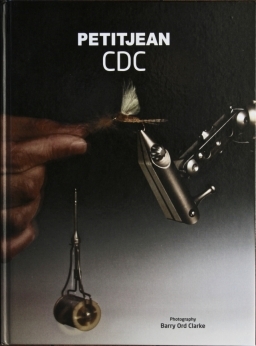
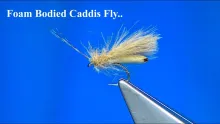
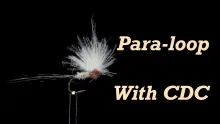
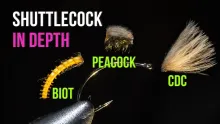
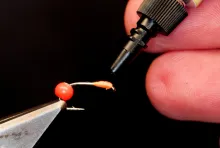

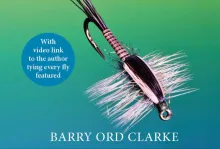

very good book
At first, the price of nearly 70 € seems too much, but the book is fabulous and it's worth every cent.
Good pictures, some stories, great patterns and really good instructions and descreptions.
BUY IT (Y)